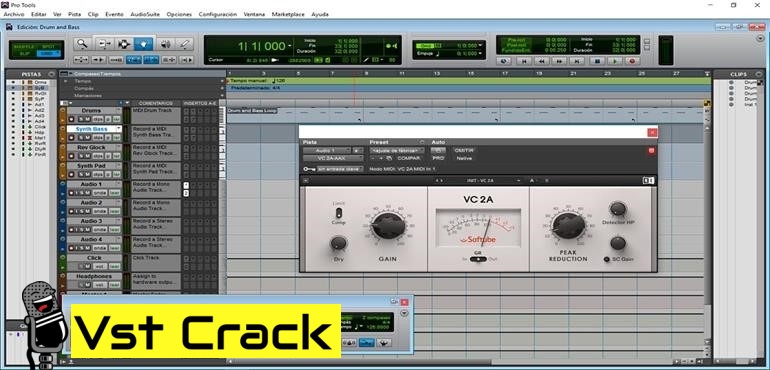
- #NATIVE INSTRUMENTS RAZOR VST CRACK FULL#
- #NATIVE INSTRUMENTS RAZOR VST CRACK CODE#
- #NATIVE INSTRUMENTS RAZOR VST CRACK CRACK#
“It had to be elegant, easy to use, and with a clear visual structure,” recounts Granzin. To finish the interface, Efflam brought in freelance designer Philipp Granzin.

The low-pass filter, for instance, actually has 16 knobs, but it looks like 4 because all the modulation amounts and the envelope knobs are small and minimalistic.” “The second task was to reduce the complexity of each ‘module’. What I did was to replicate that analog workflow visually instead, starting from the oscillators then to the filter, the reverb… “In Razor, everything except the distortion is done with operations on the partials, so it doesn’t really have stages chained one after another like an analog synth. “The pitch was ‘complicated new synthesis presented in a traditional analog layout,’” he says. The pitch was ‘complicated new synthesis presented in a traditional analog layout.’Ī large part of this work, as NI Design Lead Efflam Le Bivic explains, was about simplifying the controls – or rather “hiding the complexity.” From there, it was a case of sharpening the concept and designing an interface that would encourage people to pick up the synth and get creative with it.
#NATIVE INSTRUMENTS RAZOR VST CRACK FULL#
By fall of 2010, Erik delivered the first full prototype to NI (though not entirely on time, he confesses). That way, when you open up RAZOR, you’ll see parameters that you’re already somewhat accustomed to, but you can use them to create something totally new.”įollowing this ethos, RAZOR grew and grew. “My focus was on looking at what was already out there, recreating that with additive techniques, and then expanding on it. Or have barber-pole phasing, where the peaks are going continually up or continually down – for every peak or notch that disappears at one end of the spectrum, a new one is formed on the opposite side, which creates an acoustic illusion. “I wanted a way to demonstrate the amount of freedom I had to create a filter with a completely arbitrary shape, so why not that of water waves? And there were other examples, like the way you can morph between the comb filter and phaser-like effect. “That’s probably about the oddest, most outlandish idea I could think of for a filter,” he explains.

When I started with Reaktor there was no need to modify my analog synths anymore I could take something from the Library, learn from it and modify it – or develop my own stuff from scratch.”Īround this time, Erik was beginning to probe the outer limits of his method, going beyond interesting takes on classic concepts to imagine new ways of manipulating sound. Reaktor’s patch-based programming is much easier for me and it helps me to try out things quickly, as you can hear the results immediately.
#NATIVE INSTRUMENTS RAZOR VST CRACK CODE#
“It made me realize that I don’t want to code with text anymore. “It was a 100% match – like it was written exactly to my needs,” he explains. But with his background in computer science, the introduction of REAKTOR’s predecessor, GENERATOR, was something of a Eureka moment.
#NATIVE INSTRUMENTS RAZOR VST CRACK CRACK#
For me, personally, the dissonance effects are one of Razor’s strongest features.”Ī little over a decade before starting work on RAZOR, Erik was butting up against the limitations of hardware synthesizers of the time – sometimes going so far as to crack them open and modify them to better suit his needs. Additive synthesis, by comparison, is like a playground in that respect. You can do something similar with more conventional techniques like ring modulation or FM, for example, but it’s kind of limited. “With additive, you have a great deal of control over how harmonic or dissonant a sound is. In contrast to more common subtractive methods used by classic analog synthesizers, additive synthesis affords the user a lot more precision with which to sculpt a sound – “a control-freak dream for a synth developer like me,” explains Erik. Additive synthesis is, in short, the process of creating complex new sounds by stacking up partials – simple sine waves with precisely controlled frequencies and amplitudes. The name itself is a clue: it’s a sharp, precise, and unmistakably digital-sounding synthesizer, due in large part to its additive approach. Before we dive into where RAZOR came from, it may be helpful to clear up what, exactly, it is.


 0 kommentar(er)
0 kommentar(er)
